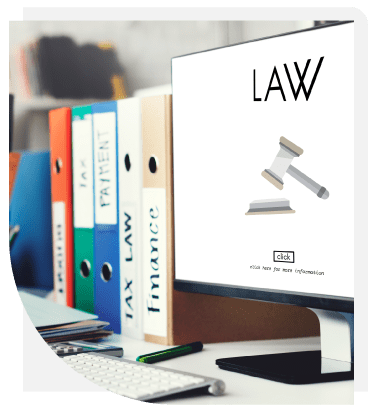A detailed guide of AML compliance requirements for auditors and accountants in the UAE
So, they must be extra vigilant to the risks of money laundering and terrorism financing. In this article, we list down the red flags of money laundering that auditors and accountants must be aware of. We also mention the important AML requirements that they must fulfil to remain in compliance with UAE’s AML regulations.
Key aspects that make auditors and accountants vulnerable to money laundering and financial crime
- Payments from clients are the proceeds from a money laundering or financial crime incident.
- The financials of a client are unusual in terms of source, complexity level, type of business activity, geographical origins, etc.
- The client hides the identity details of the ultimate beneficial owner (UBO), senior managers, signatories, legal representatives, etc. to launder the proceeds of criminal activities.
- The client may use shell companies or complex legal structures to layer the laundered money from illicit sources and bring the money back into the legal financial system of the country.
- The client conceals the sourcing of funds of the company and the auditor and/or accountant, being responsible for the financial management of this company, becomes a part of money laundering crime.
- An accountant or auditor may unknowingly be involved in laundering the proceeds of a fraud activity of a client through shell companies.
- The client hides any kind of association with Politically Exposed Persons (PEPs) concerning some kind of controlling stake
- The client tries to influence the accuracy or transparency of the auditor’s or accountant’s work through bribery or any other ways.
AML regulation for auditors and accountants in UAE
Decree-Law No. 20 of 2018 on Anti-Money Laundering and Combating the Financing of Terrorism and Illegal Organizations is the primary law for AML in UAE. The Cabinet Decision No. 10 of 2019 concerning the Implementing Regulation of this Decree-Law makes accountants and auditors subject to the AML law. This means that the AML law applies to all auditors and accountants in UAE.
AML/CFT compliance requirements for auditors and accountants in UAE
Auditors and accountants must comply with the following requirements under the AML regulations of UAE:
Understand possible ML/FT risk exposure
You must have a detailed understanding of how your accounting and auditing business can be exposed to ML and FT risks. This requires an assessment at both the enterprise level and customer level. For this:
- You must adopt a risk-based approach to identify risks in your business transactions. These risks may be of different types based on business nature, type of service, the operational environment, and other factors. Accordingly, you must adopt risk mitigation measures.
- You must be aware of the source of ML/FT risks and the phase in which the money laundering risk is high. You must know the client who is exposing you to such money laundering risks.
- You must know the transactions of clients that are making you vulnerable to financial crimes – valuation of certain types of assets or liabilities, approval of changes in a company’s capital structure, approval of company restructuring option, use of reserve account, approval of write-off of uncollected debt, payments from clients that are proceeds of financial crimes, or any other.
- You must consider different types of risks to your business due to money laundering. These risks include customer risk, geographic risk, transaction risk, channel risk, or any other. You must be able to identify each type and strategize for their elimination.
- You must conduct a risk assessment to understand the impact of these risks on your business. You must also analyze it in depth, document it, and update it as and when the changes occur.
Put in place internal policies, controls, and procedures
Auditors and accountants must implement necessary measures to manage and mitigate the ML/FT risks. One of the key measures is the implementation of strong and effective internal policies, controls, and procedures. You must assess these policies for effectiveness and update them accordingly as and when the need arises.
These policies must relate to customer due diligence and suspicious transaction reporting. It must also include requirements for governance and record-keeping. Overall, such procedures must ensure management and mitigation of risks.
Auditors and accountants must apply the same for their client’s businesses as well. They must check whether the client has implemented relevant internal policies and control measures related to AML/CFT. They must ensure that these policies and procedures are in alignment with the risk appetite of the client.
Implement customer due diligence measures
- You must screen all your existing and prospective clients against Sanctions Lists. You must check information about beneficial owners, management control, or any associations with financial criminals or PEPs.
- You must conduct a risk-based identification and verification of the true beneficial owner of your clients. For this, you must test your clients’ CDD measures to check the authenticity of their business relationships and counterparties.
- After obtaining all this information from the clients, you must check its consistency and authenticity through reliable independent sources. You can use sources such as bank references, public registries, tax identification numbers, and any other relevant registries for information on assets.
- You must check for use of any fraudulent or forged documents in transactions with clients. While working as an auditor or accountant, you must check the legitimacy of the client’s corporate documents.
Seek expert assistance of AML UAE
for your AML compliance requirements and enjoy an AML-compliant business
Report suspicious transactions to Financial Intelligence Unit (FIU)
- Unnecessary complex transactions whose purpose or beneficial owner is not known
- Transactions that are inconsistent with the customer’s risk profiling
- Large transactions (relatively large to a customer’s income or turnover) that are unusual for that client
- Large deposits or withdrawals inconsistent with customer’s business nature
- Unexplained changes in the ownership of entities or unnecessary involvement of a third party
- Transactions involving high-risk countries or third parties with no relationship with customers
- Unclear or dubious sourcing of funds for a transaction
- Refusal of customers to provide relevant information or proofs required for due diligence measures

Ongoing monitoring of their and clients’ activities
- You must check for any unexpected changes, amendments, or transfers that are unusual to your client’s routine transactions.
- You must keep a check on any changes in ownership, capital contributions, dividend payments, powers of attorney, or any other transaction that changes the control of the client’s business.
- You must monitor any unusual transaction, which does not align with the client’s expected business activity. This may include funds transfers or financial transactions, or any other transaction that does not give the correct source of financing.
- An important consideration for auditors and accountants must be to check the source of the payments received from clients. You must ensure that the payments come from known sources and not from any unknown foreign accounts or third parties. The mode of payment must be such that it does not hide the origin of funds and must be the usual mode used by the client.
Conclusion
To plan and implement any of these measures, you can also take the support of AML consultants in the UAE. A professional, AML consultant will be better equipped to help accountants and auditors with the right, relevant measures against money laundering. The consultant will ensure that industry-specific steps are taken in the fight against money laundering and terrorism financing.
Role of AML UAE
AML UAE is a leading AML compliance services provider in UAE. We help you with fulfilling all the requirements for AML and CFT in UAE. Our spectrum of AML compliance services is not restricted to national boundaries, but we also make sure that you comply with the global regulations of AML.
- Creating firm-specific AML policies, procedures, internal controls, best practices, and guidelines for your smooth business operations
- Setting up an expert AML compliance department for your firm that can handle all AML-related activities
- Selecting the most effective and appropriate AML software for your business needs to ensure AML compliance
- Helping you in filing and submitting annual AML/CFT risk assessment reports with the UAE government
- Conducting training for your employees in handling KYC, screening, risk profiling, CDD, EDD, and filing of STRs
Our recent blogs
side bar form
Frequently Asked Questions (FAQs)
Here are a few frequently asked questions when it comes to the need and importance of sanction and PEP screening in the customer onboarding process.
Yes, the means of payment used by the client to pay to the auditor or accountant can be an indicator of ML/FT risks. Some of the possible red flags are:
- If the payment is divided into several, small parts
- If the relevant documents submitted for the transaction are not trustworthy
- If the payment is done via an unrelated third party with no connection to the client or no legal explanation for the same
- If the mode of payment used is such that it hides the true payer of the money.
The auditor and accountant must have the following information about the beneficial owner of the company:
- Identification details
- Source of wealth
- Corporate history and business activities
- Business relationships
- Business transactions with third parties in foreign jurisdictions
- Any connections with criminals or past allegations of criminal activities
Share via :
Add a comment
About the Author
Pathik Shah
FCA, CAMS, CISA, CS, DISA (ICAI), FAFP (ICAI)
Pathik is a Chartered Accountant with more than 25 years of experience in compliance management, Anti-Money Laundering, tax consultancy, risk management, accounting, system audits, IT consultancy, and digital marketing.
He has extensive knowledge of local and international Anti-Money Laundering rules and regulations. He helps companies with end-to-end AML compliance services, from understanding the AML business-specific risk to implementing the robust AML Compliance framework.





